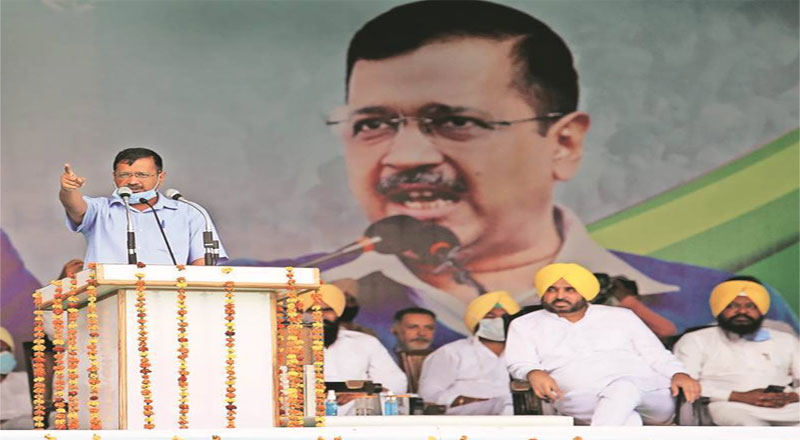AAP’s aim is to woo “disgruntled BJP voters” in its national expansion. How feasible is it?
Delhi Chief Minister Arvind Kejriwal and the Aam Aadmi Party (AAP) are facing flak over its “silence” on the anti-Muslim slogans chanted by Hindutva supporters at a protest in Jantar Mantar on 8 August. Besides being the chief minister of Delhi, Kejriwal also happens to be the MLA from New Delhi, the area in which the protest took place.
The explanation given by AAP supporters is that since the police is not under the Delhi government’s control, Kejriwal has no locus standi to speak on this issue.
This explanation hasn’t been entirely convincing as Kejriwal had said during the protests against the Citizenship (Amendment) Act that if his government had control over the Delhi Police, they would have cleared Shaheen Bagh “in two hours”.
He hasn’t made a similar statement like: “If we had control over Delhi police, we’ll arrest all those who chanted communal slogans at Jantar Mantar”.
During the anti-CAA protests, he had also called for the arrest of JNU student Sharjeel Imam for his speech calling for a Chakka Jam in the route connecting Northeast India to the rest of the country.
In contrast Kejriwal hasn’t yet called for the arrest of any of the people involved in the Jantar Mantar rally in which Hindutva supporters raised slogans calling for Muslims to be massacred.
So what explains Kejriwal’s dual approach?
There are two elements to it: AAP’s arithmetic in Delhi and its national plans.
AAP’S ARITHMETIC IN DELHI
This mainly stems from the instability of the AAP’s base in Delhi. A sizeable chunk of voters who vote for the Bharatiya Janata Party (BJP) and Prime Minister Narendra Modi at the Centre, vote for the AAP at the state level.
Consider the 2020 Delhi elections, in which AAP won 53.5 percent of the votes and the BJP got 38.5 percent. Less than ten months earlier, in the 2019 Lok Sabha elections, the BJP had got 57 percent votes and AAP 18 percent. A rough calculation would indicate that nearly one in three BJP voters – or close to 19 percent of Delhi’s electorate – prefer the BJP at the Centre and the AAP at the state level
Statements such as “we’ll clear Shaheen Bagh” and silence on the Hindutva mob are mainly to pander to this section.
Of course, the AAP also gained a great deal from the Congress. Between 2019 and 2020, the Congress’ vote share fell from 22.6 percent to 4.3 percent. Of course, it is the AAP that benefitted from this shift the most.
A major chunk of this shift, though not entirely, is from Muslim voters. According to the Lokniti-CSDS survey in Delhi, 83 percent of Muslims voted for the AAP in the 2020 Delhi elections. In comparison, 28 percent of Muslims had voted for the AAP in the 2019 Lok Sabha polls while 66 percent went to the Congress.
According to the 2019 post-poll survey, 24 percent of those who voted for the BJP in 2019 and 25 percent of those who voted for the Congress in that election, prefer the AAP at the state level.
With BJP voters being a larger category than Congress voters, it seems that the AAP has taken a call to place its politics in a way that ensures a smooth shift of BJP voters. The other assumption is that shifting Congress voters, particularly Muslims, would shift to the AAP to defeat the BJP.
At least that’s the calculation the AAP seems to be working with in Delhi. However, this isn’t just about Delhi.
https://www.thequint.com





